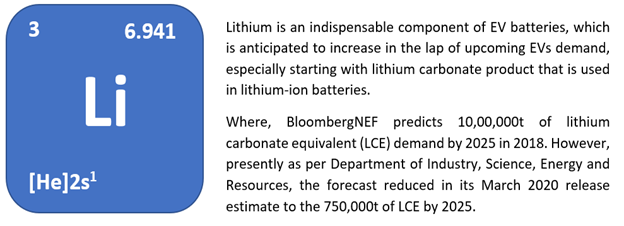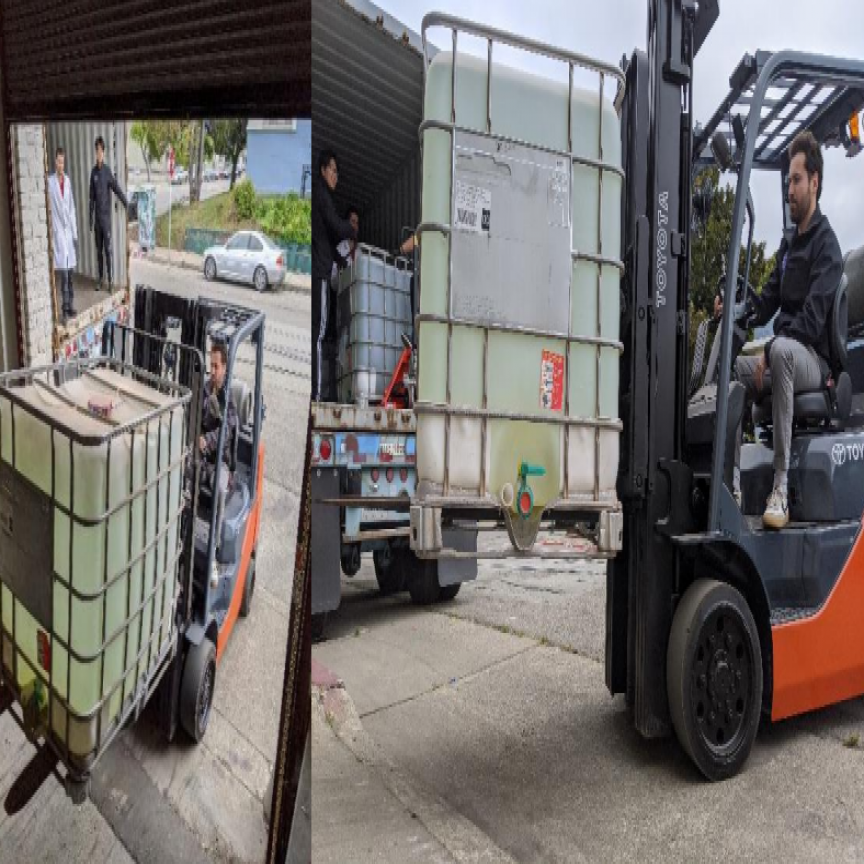
Even after a drop in forecasted LCE consumption by 2025, the increment from current global lithium consumption is likely to be around 158% from 291,000t of LCE consumption in 2019. That’s a massive opportunity that can be tapped by a Company, if the firm easily scales up to meet the volatility of demand.
Having said that, it is notable to mention that around 46% of total world lithium is consumed in rechargeable batteries, where South America's Lithium Triangle produces 40% of global lithium at the lowest cost and has world’s ~69% of reserves.
How is Battery Grade Lithium produced from massive reserves of Lithium Triangle? Is there any Risk Involved?
The lithium extraction from Lithium Triangle involves pumping of water rich in lithium salts (brines) from aquifers to the evaporation ponds, consuming high volumes of water. Also, this process takes around 9 to 18 months for the recovery of around 50%. Also, it is pertinent to state that most of the mining operations are in the area of water scarcity. The process involves huge risk toward water scarcity along with the environment and social dimensions.
The grade produced by this method involves impurity, which requires further refining for battery-grade material. And most of the refining facilities are concentrated in China, making the country dominant in battery-grade lithium product.
Battery Grade Lithium Product
Lithium carbonate (Li2CO3) with the purity of around 99.5%, 99.9% and 99.999% falls in the categories of battery-grade lithium product, suitable for EVs.
Where lithium carbonate with 99.5% purity has water content up to 4% with an average granular particle of fewer than 6 microns and has low mineral impurities, lithium carbonate with 99.9% purity (enhanced grade) has a water content of 3% with an average granular particle in the range of 2-5 micron and has extremely low mineral impurities. Lastly, lithium carbonate with 99.999% purity (superior grade) has zero water content level and almost nil mineral impurities, less than three parts per million (ppm).
“Is There Any Way to Overcome All the Problems from Environmental, Social, Scalability and Purity to Refining Facilities for Battery Grade Lithium Facility?”
Yes, We Do! ASX listed Lake Resources NL (ASX: LKE) has the answer to all these issues, working closely with its technology partner Lilac Solutions. LKE's Kachi lithium brine project located in lithium triangle uses Lilac's direct extraction ion-exchange technology which delivers the highest recovery of 80-90% in just a few hours.
What makes this technology different from traditional evaporation pond method?
This technology takes brines from the aquifer and extracts lithium from brines using the ion-exchange method without changing any chemical composition of water, which is then sent back to the underground water reservoir or aquifer. Thus, in a lesser time it can extract lithium at battery-grade lithium product at a low cost compared to the traditional evaporation method and without impacting the environment.
The technology has already tested the Kachi's brine solution, which has resulted in 99.9% purity of lithium carbonate, i.e. battery grade product suitable for battery or cathode producing companies.
It is worth mentioning that the low-cost product with high purity and low environmental impact is capable of charging a premium to its product.
Okay! All the Problem Solved but What About Scalability?
Resources play the game here. The Company’s Kachi project in its 70,000 hectares of mining lease illustrates a total of 4.4Mt lithium carbonate (LCE) resources. Apart from Kachi, LKE also owns 100% of Olaroz/Cauchari & Paso Lithium Brine Projects along with Catamarca Pegmatite Project in Argentina.
Also, it is worth mentioning that the project is likely to start producing in 2023 at 10ktpa of LCE, which can be increased in phased manner to the capacity of 25ktpa of LCE in the near term.
How Well are the Project and Technology Advancing?
Bill Gates led Breakthrough Energy fund supporting Lilac Solutions for US$20 million, and upsize of Private Placement (PP) and Share Purchase Plan (SPP) from its initial issue to A$3.68 million and A$2.5 million respectively is the testimony for both project and technology advancing well, hand in hand.
As of now, the Company is looking forward to delivering the sample product (Kachi’s brines processing at Lilac’s direct exchange technology) to prospective off-takers for the qualification process by April 2020. Also, PFS for Kachi project is anticipated soon.
The LKE stock closed at A$0.036, up 9.1% on 02 April 2020 with a market cap of A$20.87 million.



